PLAY Introduction
The purpose of User Acceptance Testing (commonly called UAT) is to get sign-off by the end product owner for a milestone delivery. This can be an internal sponsor or actual end users of the solution. The acceptance of the deliverable signifies when a goal is reached. In football this is the Ref calling a touchdown!
PEOPLE
2-10 depending on the size of the team. If it becomes larger than 10 people consider breaking out into smaller groups.
TIME
30-60 Minutes. No one wants to be in a meeting longer than needed. Try to keep it short and sweet.
NINJA LEVEL
Practitioner to Master. It may take some practice to run this play.
PREP WORK
PLAYS
Prior to this play you will need to have a clear acceptance criteria defined. This should have happened during the Defining Requirements play or in the Creating Specifications play. If not, do so now.
PEOPLE
The right people are key to the success of this play. Review the invite list to ensure that all the various experts are in the room.
PLACE
Virtually or in-person it is critical that everyone has face-time with each other. So make sure that if attending virtually that everyone can connect in video chat. You will also need to share ideas, so a whiteboard is important and a space that fosters creativity and innovation.
THE PLAY
All of our plays are five steps or less! However, you may need to run multiple plays to get the most out of this one. Don’t worry – you can do it! Learn the play, rehearse it regularly, apply it in the field and debrief on the outcomes. If it worked well, use it again; if it didn’t, find out why. Are there new factors in the system you need to consider, or do you just need to keep practicing? If you need help or have questions on this play, contact us!
01
SET THE STAGE
Who are the players?
Every winning team knows which players to have on the field and what talent you need on the ready. To successfully deploy this play you will need the following roster:
![]() Meeting Facilitator: Likely this is you! But you don’t have to do it alone, ask a friend (think of it like a football team that has a coach for different parts of the team). Skills needed:
Meeting Facilitator: Likely this is you! But you don’t have to do it alone, ask a friend (think of it like a football team that has a coach for different parts of the team). Skills needed:
- Keep the team focused on the goal!
- Foster a positive and creative space for all.
- Organized and prepared to run play.
![]() Subject Matter Experts (SMEs): A SME (pronounced S-Mee) is critical for this play. They will help drive the team to a shared understanding of what is needed to win. Skills needed:
Subject Matter Experts (SMEs): A SME (pronounced S-Mee) is critical for this play. They will help drive the team to a shared understanding of what is needed to win. Skills needed:
- Specific domain knowledge, narrow and deep rather than broad and shallow.
- Communication and team collaboration. They must be able to share with others the knowledge they have on a particular subject.
![]() Stakeholders: Key members of the team who can help drive direction of the final product. This can be internal or external players. They might have a specialized skill set but they are interested in being part of the winning team. For the initial meeting this does not need to include the entire team, but be sure that each group has representation. Skills needed:
Stakeholders: Key members of the team who can help drive direction of the final product. This can be internal or external players. They might have a specialized skill set but they are interested in being part of the winning team. For the initial meeting this does not need to include the entire team, but be sure that each group has representation. Skills needed:
- Vested interest in the outcome
- Commitment to seeing it through completion (no fair weather fans)
- Engaged and believes the team can win!
![]() Sponsor: This must be someone who has skin in the game. In sports this would be the team owner, someone who has an investment in seeing the team win. In business this is typically a project sponsor or product owner who charters the project. Skills needed:
Sponsor: This must be someone who has skin in the game. In sports this would be the team owner, someone who has an investment in seeing the team win. In business this is typically a project sponsor or product owner who charters the project. Skills needed:
- Authority to accept project outcomes
- Engaged in outcomes and supporting the team
- Biggest supporter in the stands
Get the field ready!
![]() Schedule the meeting in advance. Don’t wait until the last minute to schedule the meeting. You want people to be excited about it but not so last minute that they have no time to prepare.
Schedule the meeting in advance. Don’t wait until the last minute to schedule the meeting. You want people to be excited about it but not so last minute that they have no time to prepare.
![]() Include an agenda. Set expectations – this will help keep your meeting on track. Include schedule and any prep work needed. Also let them know if it is okay to invite others or not. Remember that if you have to many people in the meeting, it will be difficult to facilitate brainstorming sessions without breaking out into smaller groups.
Include an agenda. Set expectations – this will help keep your meeting on track. Include schedule and any prep work needed. Also let them know if it is okay to invite others or not. Remember that if you have to many people in the meeting, it will be difficult to facilitate brainstorming sessions without breaking out into smaller groups.
![]() Prep the room. Arrive early and get ready. If it is in a physical room, get whiteboards ready, enough chairs for everyone, water and snacks are always a hit! If virtually, a central location for notes, brainstorms and follow-up items. Test connectivity in the meeting room and make sure there is enough seats for all participants.
Prep the room. Arrive early and get ready. If it is in a physical room, get whiteboards ready, enough chairs for everyone, water and snacks are always a hit! If virtually, a central location for notes, brainstorms and follow-up items. Test connectivity in the meeting room and make sure there is enough seats for all participants.
02
CORE ACTIVITIES
SHARED UNDERSTANDING
It is critical that everyone has a shared understanding of the original requirements. Often the group wants to jump to testing the outputs, but a review of the requirements will save so much time down the road – it’s worth the time to do this now.
- Hopefully the organization has a Quality Assurance (QA) team that has previously tested the deliverables. They will typically complete functional testing, integration testing and regression testing for the product. It is their goal to find any defects and get them fixed before going to UAT.
- With the UAT team, review any requirement delivered in the group of outcomes with team. Focus on the acceptance criteria of each requirement.
- Ask the team if there are questions on the acceptance criteria for each requirement or how to test the outcome (this is where a QA resource is very helpful, as they can explain to the team how to test most efficiently).
- Review timeline for testing. Try to timebox the testing period as a reasonable length to where the team will be able to thoroughly test but not so long that it is forgotten or team is testing for every possible scenario.
TEST, TEST, TEST
This is where the team breaks out into testing activities. Dependent on the complexity of the project, this may take hours or even weeks to complete. Here are some basic testing tips:
- Shift thinking to end user perspective. What is the purpose of this feature and who will use it? How might they think about it differently than you? What value is this providing them?
- Look for unintended impacts. When we build new things we tend to focus on the singular goal, but this is the opportunity to take a step back and review the entire system. Understand any dependencies and test to ensure they are still working as designed.
- Review requirement again. What was the original goal? Has that been achieved? If not, is it a nice-to-have or a must-have fix? Be careful to avoid introducing scope creep now. Meaning, this is not the time to define additional requirements. If it is working as required, accept it and add the additional items for a future release. If it is a must-have fix, send back to the implementation team with clear communication on what specifically needs to be resolved in order to gain acceptance (this should directly link to the original requirements).
ACCEPTANCE
The objective is to gain acceptance of the outcomes for each requirement. Some organizations may formalize this process and have a sign-off for each requirement and specification. Others may be a more informal review and thumbs-up approval.
- Document the UAT approval within the requirement. This completes the implementation cycle.
Want to learn more about UAT – What, Why, Who & Techniques? Check out this article by technetexperts.
03
 TEAM HUDDLE
TEAM HUDDLE
Time to run the Team Huddle play. Ask the team the following questions and then take a vote. Keep follow-up questions to a minimum and capture any issues raised as an offline follow-up (and be sure to follow-up).
Understand the play?
![]() The play was understood and I asked any questions in time!
The play was understood and I asked any questions in time!
![]() I’m not sure I understand and I have some questions …
I’m not sure I understand and I have some questions …
![]() I did not understand the play or my part in it.
I did not understand the play or my part in it.
Did you get in the game?
![]() Yes, I made my moves and was in the right place at the right time!
Yes, I made my moves and was in the right place at the right time!
![]() I’m not sure I understand what I was supposed to do …
I’m not sure I understand what I was supposed to do …
![]() I kept the bench warm and watched from the sidelines.
I kept the bench warm and watched from the sidelines.
Ready for what’s next?
![]() Yes, I know the game plan and ready to win!
Yes, I know the game plan and ready to win!
![]() I’m not sure what’s next or if I am involved …
I’m not sure what’s next or if I am involved …
![]() No clue what’s next and would rather sit it out.
No clue what’s next and would rather sit it out.
04
NEXT STEPS
Touchdown! Congratulate the team on a very successful and productive UAT!

![]() If needed, schedule another meeting. For large projects you may need to repeat this meeting several times to UAT all requirements. Don’t worry, once the team gets the hang of it, the next meeting(s) will go much faster and smoother.
If needed, schedule another meeting. For large projects you may need to repeat this meeting several times to UAT all requirements. Don’t worry, once the team gets the hang of it, the next meeting(s) will go much faster and smoother.
![]() Publish user acceptance for each requirement in a central repository that the team has access to immediately. Even better if it is someplace that the team can add comments or collaborate on. Keep the creative chat going!
Publish user acceptance for each requirement in a central repository that the team has access to immediately. Even better if it is someplace that the team can add comments or collaborate on. Keep the creative chat going!
05
IT’S A WRAP
You did it! Now just a few follow-up items:
- Reflect on the play. Ask yourself how it went? What could have gone better, what could have gone worse? In sports this is watching the game again to see any plays that could have been better. Update your playbook. Build feedback loops that help you see what’s working; what’s not; and how to continue to develop the playbook by learning, adapting and iterating constantly as situations change and new challenges arise.
- Contribute to the community of Playbook.Ninja. Sign-up for an account and receive updates on when new plays are added and help others by commenting on the plays with what worked or your experience.
Thank you for being a Playbook.Ninja
![]()


 TEAM HUDDLE
TEAM HUDDLE